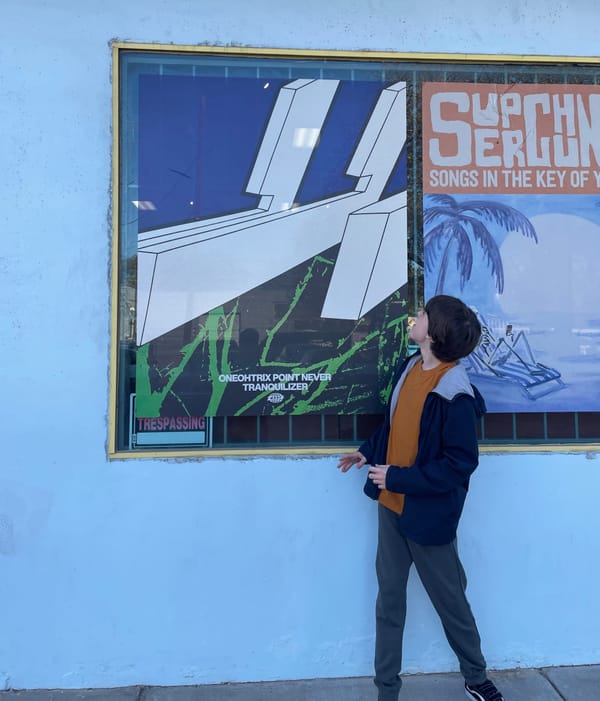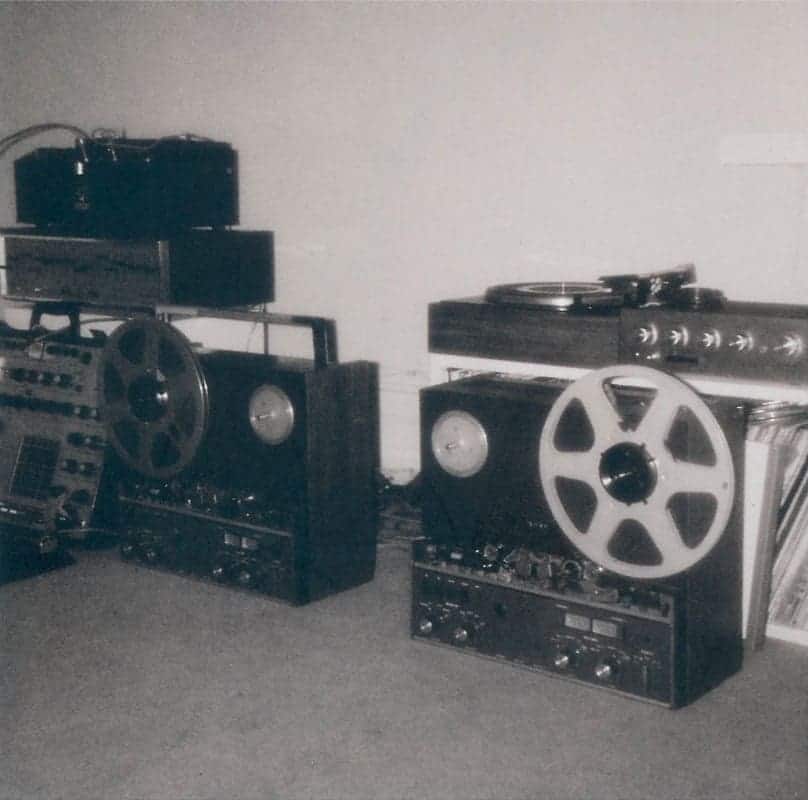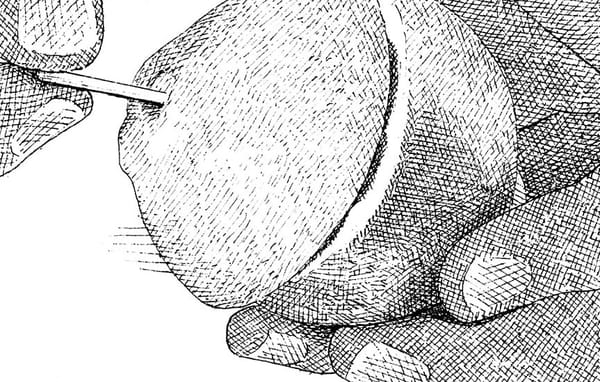The Top 10 Albums of 1983
Because album lists shouldn’t happen only once a year. In this installment: The New Wave was drying up and the New Romantics were taking hold. But tell that to a Cub Scout in 1983 and you'll get a blank stare.
While watching MTV one day after school in 1989, I saw the video for David Bowie’s “Modern Love.” Though the song was released in 1983—and so was the video, presumably—until that day, six years later, I’d never recognized the song for being as excellent as it really is, nor did I realize Bowie was such an engaging performer. I just hadn’t ever gotten it before, but right then I did.
It shouldn’t be a surprise that I didn’t get “Modern Love” at the time: In 1983, my favorite song was the Ewok celebration from Return of the Jedi. But in 1989 my favorite song from 1983 was “Modern Love,” and in 2007 it’s something else entirely.
10. Sonic Youth, Confusion Is Sex
I wondered why every Sonic Youth song I tried to play on guitar never sounded quite right. A friend came over with a guitar magazine that contained tablature showing how Thurston Moore deviated from standard EADGBE tunings. Examples included GABDEG (on “Teenage Riot,” for example). Or perhaps AF[drumstick]G[cat]B (late night in the studio). Can’t really remember. But I do know it took me 10 minutes to retune my guitar, and I figured Sonic Youth shows must be looooooooong, man, until I read about the 500 guitars Moore puts in the van.
9. Duran Duran, Seven and the Ragged Tiger
In sixth grade, my best friend’s older sister loved Duran Duran. She was in love with John Taylor at least as much as I was in love with her—though there was probably a better chance something might happen between the two of them than between the two of us. Still, because she liked Duran Duran, I was determined to like Duran Duran. Thinking my taste for the band stemmed entirely from their music, my friend swiped his sister’s copy of Seven and the Ragged Tiger. The tape smelled lovely, like eucalyptus oil. That’s because, as he told me, he stole it from her underwear drawer. Um, uh.
8. Tears for Fears, The Hurting
In addition to Roland Orzabal’s—one-half of Tears for Fears—stated interest in psychology, there’s this: “While undergoing primal therapy, a patient is encouraged to ‘re-experience’ his early, dramatic emotional states (even perinatal ones), including screaming like an infant, hence the expression ‘tears for fears.’” In other words, Tears for Fears’s music appeals on an essential, psychological level. In even other words, Scientologists totally hate “Everybody Wants to Rule the World.”
7. R.E.M., Murmur
R.E.M.’s debut is a chirpy, straightforward pop record. It’s solid, though simple, and doesn’t seem at all like stadium material. And while that’s all well and good—please—what is this on the cover? Why that’s a railroad trestle in Athens, Ga. In 2000 the mayor of Athens voted to save the trestle, probably so indie rock pilgrims would have a place to stop and smoke.
6. Brian Eno, Apollo: Atmospheres and Soundtracks
A few summers ago, I picked this album out of the used bin at a record store. That sweltering afternoon I returned home, flush from breathing in all that warm air, and switched on the window unit. I put on this album, conceived as the soundtrack to a space mission, and promptly fell asleep. When I woke, almost the entire album had played through, and “Always Returning”—presumably about the astronauts’ return to Earth—was playing, my apartment was freezing. Our temperatures were in reverse.
5. The Replacements, Hootenanny
This may sound like a bold statement, but here goes: “Color Me Impressed” is the single greatest rock song of the 1980s. I’m sure of it, and “Color Me Impressed”—as you’d expect from the single greatest rock song of an entire decade—is a bold statement in itself. Brimming with honesty and soul, fueled with adrenaline, it’s enough to make you tear the doors off your Passat on the way home from therapy. Because who says this is where you’re supposed to be, doing what you’re doing?
4. Echo & the Bunnymen, Porcupine
With 1980’s Crocodiles and Heaven Up Here in 1981, Echo & the Bunnymen basically made the same album twice—the same great, awesome, brilliant album—except with more songs in minor keys. With Porcupine in 1983, they’d again rewritten previous material (still great, awesome, and brilliant), except this time it’s with songs that are slightly more melodic than the others—a little more, but not a lot. Baby steps, baby steps.
3. Tom Waits, Swordfishtrombones
The guitarist in my band in high school, who was a virtuoso at 17, and who owned a three-octave, seven-string Ibanez (magenta), loved Tom Waits. More than Page or Beck, he loved Waits, who I was pretty sure couldn’t solo for shit. After college, a girlfriend was excited that Tom Waits was coming to Austin to play at South by Southwest. The dumb look on my face must have reminded her of the time a few weeks before, when I picked up her copy of Songs in the Key of Life, which has Stevie Wonder’s signature printed on the back cover—which I noted was barely legible. “You’re kidding, right?” she said. Sure, I argued, I forgot he was blind, but that’s only testament to Stevie’s musicianship. She broke up with me right before South by Southwest. Anyway, I get the Tom Waits thing now, OK?
2. The Chameleons, Script of the Bridge
You know that dark, New Wave-y guitar sound American bands in the first part of the 2000s couldn’t seem to stop aping? That sound is the Chameleons (no pun intended). Thanks to their short career and relative obscurity (at least in the U.S.), the Chameleons’ influence on contemporary rock is practically copyright infringement. And yet, the cribbers, perhaps not surprisingly, could never quite touch the same poetic splendor Marc Burgess did with his Chameleons. It’s your missing piece.
Album of the Year: New Order, Power, Corruption & Lies
In 1979, Joy Division was the future of music—until 1980, when lead singer Ian Curtis committed suicide. The remaining band members reformed as New Order, and released their first album the following year. But while that album, Movement, does hint at new directions ahead, it didn’t tie up the loose ends that hung over New Order. But Power, Corruption & Lies did.
Any rumination by critics or fans that the new band would never really get beyond Ian Curtis’s shadow could now be dismissed. Especially since many of the songs here are allegedly about Curtis’s death—”Blue Monday,” “Your Silent Face,” “Leave Me Alone,” and with enough close listening, perhaps the whole second side of the record—it appeared New Order was closing the door on its past, moving on, at least symbolically so.
Except, sometimes a cigar is just a cigar, and maybe it’s just that Power, Corruption & Lies is so extraordinarily grand, so powerful that it allowed Joy Division obsessives to finally let go. Maybe. It’s hard to know, hard to care, and hard to remember to care while the chattering breakdown in “Blue Monday” is blaring from the speakers.
Originally published at The Morning News




